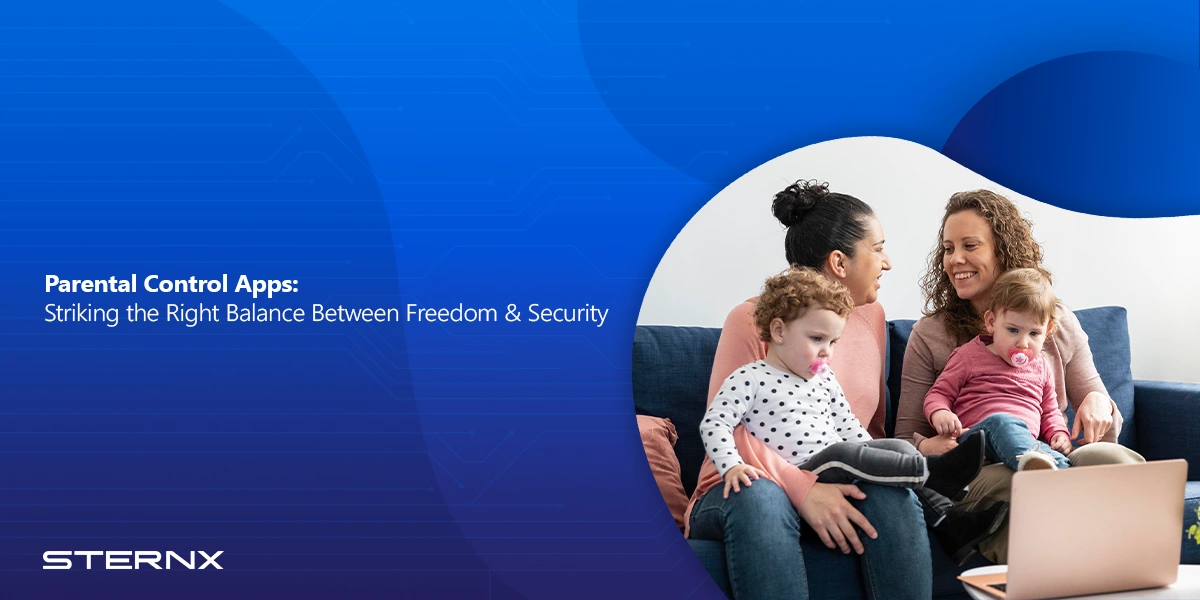With the rise of technology, children have access to a world of information and entertainment at their fingertips. While this can be a great tool for learning and exploration, it also comes with its fair share of risks. From cyber bullying to exposure to inappropriate content, the internet can be a dangerous place for young minds. This is where parental control apps come into play. Parental control app emerge as potential solutions, empowering parents to guide their children’s online experience responsibly. But are these apps magic bullets, or do they raise concerns about privacy and trust? Let’s delve into the world of parental control apps, exploring their benefits, drawbacks, and how to strike the right balance between freedom and security.
Table of Contents
ToggleWhat are Parental Control Apps?
Parental control apps are software programs designed to help parents monitor and manage their children’s online activities. These parental monitoring apps can be installed on various devices, including smartphones, tablets, and computers. They allow parents to set certain restrictions, such as blocking specific websites, limiting screen time, and monitoring online activity.
The Benefits of Parental Control Apps
- Protecting Children from Inappropriate Content: One of the primary benefits of parental control apps is their ability to filter out inappropriate content. These apps can block access to websites with explicit language, violence, or sexual content. This can help protect children from exposure to harmful material that could negatively impact their development.
- Monitoring Online Activity: Many parental control app offer monitoring features that allow parents to see what their children are doing online both on android devices and iOS devices. This can include tracking browsing history, monitoring social media activity, and even recording keystrokes. While this may seem invasive, it can be a useful tool for parents to ensure their children are not engaging in unsafe or illegal online behavior.
- Setting Screen Time Limits: Another common feature of parental control app is the ability to set screen time limits. This can help parents manage their children’s technology use and ensure they are not spending too much time on devices. By setting time limits, parents can encourage their children to engage in other activities, such as reading, playing outside, or spending time with family and friends.
- Fostering Parent-Child Communication: While parental control apps can be a useful tool for monitoring online activity, it’s important for parents to use them in conjunction with open communication with their children. By discussing online safety and appropriate behavior, parents can help their children develop critical thinking skills and make informed decisions about their online activities.
Disadvantages of Parental Control Apps
- Invasion of Privacy: One of the main concerns with parental control apps is the potential invasion of privacy. While parents have a right to monitor their children’s online activities, there is a fine line between protection and overstepping boundaries. It’s important for parents to respect their children’s privacy and only monitor their activity to a reasonable extent.
- Circumvention: Despite the best efforts of developers, many parental control apps can be circumvented by tech-savvy children. This can include using a VPN to bypass filters or simply accessing the internet on a different device. It’s important for parents to be aware of these limitations and to have open conversations with their children about online safety.
- Overreliance on Technology: While parental control apps can be a useful tool, it’s important for parents not to rely on them solely. Technology is not a substitute for active parenting and open communication. Parents should still be involved in their children’s online activities and should foster a relationship of trust and understanding.

Striking the Right Balance
Parental control software apps can be a useful tool for protecting children online, but it’s important for parents to strike the right balance between freedom and security. Here are some tips for finding that balance:
- Communicate openly with your children about online safety and appropriate behavior.
- Set reasonable limits on screen time and monitor online activity, but respect your children’s privacy.
- Use parental control apps in conjunction with active parenting, not as a substitute.
- Consider your children’s age and maturity level when setting restrictions.
- Encourage critical thinking skills and empower your children to make informed decisions about their online activities.
- Foster a relationship of trust and understanding with your children.
By following these guidelines, parents can use parental control apps or parental monitoring apps effectively while still allowing their children the freedom to explore and learn online.
Additional tips for a holistic approach:
- Emphasize the “why” behind restrictions: Don’t just impose rules, explain the reasoning behind website blocks, time limits, or app restrictions. Help your child understand the potential risks and how these measures protect them.
- Foster digital literacy skills: Empower your child to make informed choices online by teaching them essential skills like critical thinking, online privacy practices, and identifying credible information. Resources like Common Sense Media offer age-appropriate lessons and tools.
- Lead by example: Your own digital habits influence your child’s behavior. Be mindful of your screen time, practice responsible social media use, and demonstrate healthy online boundaries.
- Embrace open dialogue: Create a safe space for open communication about online experiences, challenges, and concerns. Regularly check in with your child and encourage them to ask questions without judgment.
- Technology-free zones and activities: Dedicate time for technology-free family activities and hobbies. Encourage outdoor play, board games, creative pursuits, or simply spending quality time together without screens.
- Celebrate responsible choices: Acknowledge and praise your child’s responsible online behavior. This positive reinforcement motivates them to continue making good choices.
Balancing Freedom & Security With Safes Parental Control By SternX
As we have discussed on how to balance freedom and security with parental control apps throughout this blog post, you can use a third-party parental monitoring apps like Safes from SternX Technology to monitor and limit your child’s screen time on a variety of devices and platforms.
Safes offer wealth of parental control features that you can benefit from to safeguard your child from the risks of the digital landscape.
Safes is the free best parental control app that supports all phones, tablets, and computers running on Android devices, iOS devices, macOS, and Windows. With Safes parental monitoring app, you can easily monitor your child, prevent the dangers of sexting, block inappropriate apps, such as the ones used for sexting on your child’s devices for you to get the freedom you need.
With SternX Safes parental control application, you do not need to have access to your child’s personal device. Also, you do not have to set separate rules on each and every device of your child as of it’s multi-platform features that supports Android devices, iOS, Windows, and Mac.
If you need a parental control free app to keep your children safe online, give Safes a try to provide you with the freedom and security, and safeguarding your children’s digital activities, feel free to download it on your Android or iOS device.
Remember, parental control apps are just one piece of the puzzle. By combining them with consistent guidance, open communication, and digital literacy education, you can empower your child to navigate the online world safely and responsibly.
